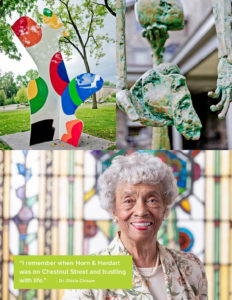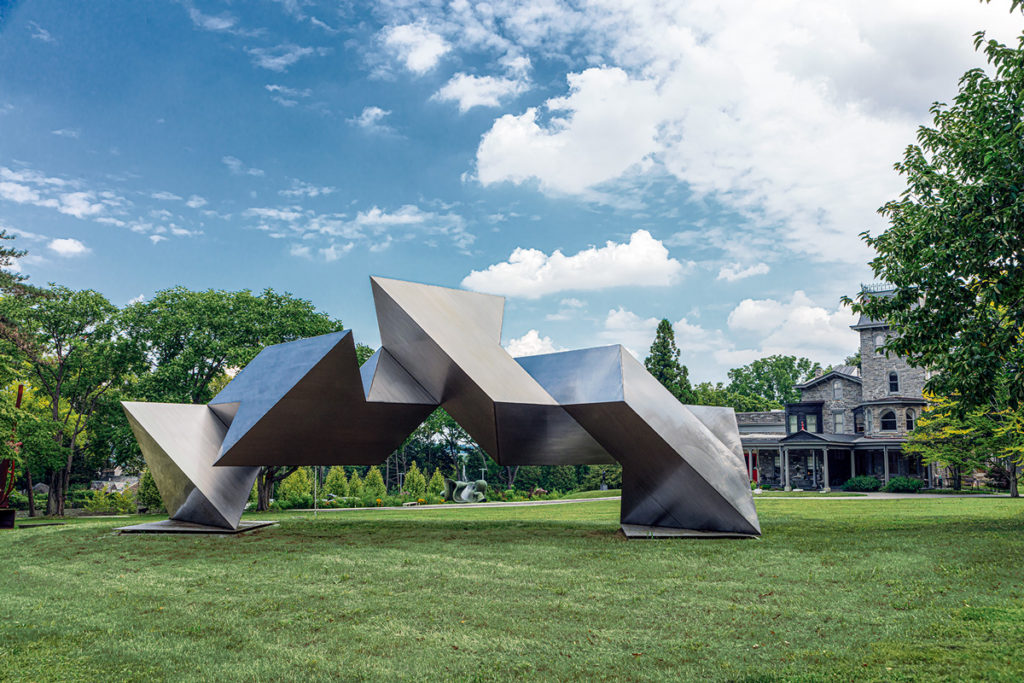How the Woodmere Art Museum Became a Community Hub for the Arts
Woodmere Art Museum, which lies just around the corner from The Hill at Whitemarsh, is more than just a museum; for the last decade, it has served as a social place for the community to gather. While surrounded by various elements of the arts—paintings, sculpture, music, film—people who visit the Woodmere Art Museum in Chestnut Hill can experience art that stimulates a variety of senses and sparks conversation.
“Years ago, museums were places that people went to feel educated and sophisticated, but the world has changed,” says Bill Valerio, who has served as the director of Woodmere for nearly a decade. “Now people are really looking for experiences that help them tap into their own creativity and provide them with a hands-on opportunity to build their creative mind and allow the art to impact their thinking about the world.”
In his role as director, Bill has helped shape the museum’s new approach to the arts. The museum has a full calendar of events: live jazz music, movie screenings, lectures and children’s workshops.
“Our programming really allows people to experience other types of art,” says Bill. “Whether that’s music, film, poetry or dance, our goal is really to broaden accessibility to all of it and give people new opportunities to engage with creativity.”
Woodmere’s fall exhibition, called “Our Town,” features the artwork of local Philadelphia artist Edith Neff. Neff, who died in 1995, was a realist who painted the people she saw living here in Philadelphia in places that will be familiar to anyone who has spent time in the city.
“We’re so excited to re-introduce her work to a contemporary Philly audience,” says Bill. “She is known for painting with light and bright color, and I think it is going to be a really wonderful experience. This museum belongs to the community, and we try to bring in exhibits that reflect that.”
Community spirit and history are also reflected in a large stained-glass window that was created by world-renowned stained-glass artist Nicola D’Ascenzo for the Horn & Hardart automat. Horn & Hardart, which first opened its doors in 1888, started as a small lunchroom on South 13th Street in Philadelphia. By 1902, the lunchroom had moved to 818 Chestnut Street and officially became America’s first automat, which used patented vending machines from Berlin to sell prepackaged food to hungry customers. Though serving mostly working-class people, the interior of the automat was ornate, with marble counters and floors, ornately carved ceilings and custom stained-glass windows from D’Ascenzo. One of those original windows was gifted to the museum by Nancy Posel and will be on display through December 2019.
“It depicts the artist’s view of Paradise,” says Bill. “It is one of the great treasures of Philadelphia history, and we’re so pleased to have it in our collection.”Dr. Gloria Chisum, a member of Woodmere’s board and a resident at The Hill at Whitemarsh, remarks about how awestruck she was in seeing the stained glass from Horn & Hardart at the museum.
 “I remember when Horn & Hardart was on Chestnut Street and bustling with life,” she says. “All these years later, it’s pretty remarkable to see it again through the museum, which has become a real asset for Philadelphians.”
“I remember when Horn & Hardart was on Chestnut Street and bustling with life,” she says. “All these years later, it’s pretty remarkable to see it again through the museum, which has become a real asset for Philadelphians.”
In addition to preserving pieces of Philadelphia’s history and inspiring nostalgia for longtime residents, the museum has also aimed to spark the creativity and imaginations of children. Gloria says she was drawn in part to the museum because of its extraordinary programs for children in Philadelphia.
“I learned that they were doing really constructive things for the school kids in Philadelphia,” she says. “It’s become more than just a private museum—it’s a wonderful institution.”
As a board member for the past three years, Gloria has played a vital role in helping to continue to steer the museum in ways that enrich the community and embrace the diversity of Philadelphia. As part of the museum’s Summer Community Art Program, children between the ages of 8 and 17 come from neighborhoods throughout the city to participate in a unique art-making experience.
“It’s so incredible to see the experiences that the museum has created for youngsters,” says Gloria. “They bus school children up there from all different neighborhoods throughout Philadelphia and give them a chance to experience the arts in a way they never have before.”
Over the years, Woodmere Art Museum has become a place where Philadelphians of all ages can enjoy the arts in various ways. Bill describes the museum as a quirky place with an important message: engage in the arts with all of your senses, take it in, and then send creativity and creative thoughts back out into the world.
To learn more about Woodmere’s upcoming exhibits and events, visit its website: https://woodmereartmuseum.org/
Photo Credits:
Untitled, 2017, by Sam Maitin. Aluminum, 6 ft. x 6 ft. x 6 ft. (Woodmere Art Museum: Museum commission in memory of Acey Wolgin, with funds provided by Bill Wolgin and his family. Additional support was provided by Dr. Luther W. Brady, Jr. and generous contributions were made in memory of Dr. K. Robert and Mrs. Sylvia Lange, 2017)
Untitled, 2008-2014, by Viorel Farcas. Bronze and marble, 8 ft. x 6 ft. (Courtesy of the artist).
Untitled [Stained Glass Window from the Horn & Hardart Building at 16th and Chestnut Streets], c. 1930 by Nicola D’Ascenzo. Stained glass, 8 ft., 4 in. x 12 ft. x 6 in. (Woodmere Art Museum: Gift of Nancy R. Posel, 2016. Conservation funds generously provided by Ellen and Frances Posel.)
